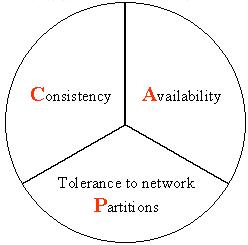It is commonly believed that high internal resolution combined with expensive operations (e.g. atrous convolutions) are necessary for accurate semantic segmentation, resulting in slow speed and large memory usage. In this paper, we question this belief and demonstrate that neither high internal resolution nor atrous convolutions are necessary. Our intuition is that although segmentation is a dense per-pixel prediction task, the semantics of each pixel often depend on both nearby neighbors and far-away context; therefore, a more powerful multi-scale feature fusion network plays a critical role. Following this intuition, we revisit the conventional multi-scale feature space (typically capped at P5) and extend it to a much richer space, up to P9, where the smallest features are only 1/512 of the input size and thus have very large receptive fields. To process such a rich feature space, we leverage the recent BiFPN to fuse the multi-scale features. Based on these insights, we develop a simplified segmentation model, named ESeg, which has neither high internal resolution nor expensive atrous convolutions. Perhaps surprisingly, our simple method can achieve better accuracy with faster speed than prior art across multiple datasets. In real-time settings, ESeg-Lite-S achieves 76.0% mIoU on CityScapes [12] at 189 FPS, outperforming FasterSeg [9] (73.1% mIoU at 170 FPS). Our ESeg-Lite-L runs at 79 FPS and achieves 80.1% mIoU, largely closing the gap between real-time and high-performance segmentation models.
翻译:人们通常认为,高内部分辨率加上昂贵的操作(例如,剧烈的混凝土)是准确的语义分割所必须的,导致速度缓慢和记忆用量大。在本文中,我们质疑这一信念,并表明既不需要高内部分辨率,也不需要剧烈的混凝土。我们的直觉是,虽然分解是一个密集的每像素预测任务,但每个像素的语义往往取决于附近邻居和远处的环境;因此,一个更强大的多规模特征融合网络在很大程度上发挥着关键作用。根据这种直觉,我们重新审视常规的多规模特征空间(通常被P5封在P5上),并将它扩大到一个更丰富的空间,即P9,其中最小的内分解度既不高,也不大。我们的直线是一个内部分辨率甚高的多规模拼凑网络。也许令人惊讶的是,我们在FS-L-S-S-S-S-S-S-S-S-S-S-S-S-S-S-S-S-S-S-S-S-S-Servaxi-S-S-S-S-S-S-Server 直径直径直径、S-S-S-S-S-S-S-S-ireaxl-S-sl-S-S-S-sl-S-S-S-S-S-S-S-S-S-S-S-S-S-S-S-S-S-S-S-S-S-S-Server速度速度速度速度快、速度速度快快,在前数据速度快,在前的F-S-S-S-S-S-S-S-S-x-S-S-S-S-S-S-S-S-S-S-S-S-S-S-S-S-S-S-S-S-S-S-S-l-l-S-S-S-S-S-S-S-S-S-S-S-l-l-S-S-S-S-S-S-S-S-S-S-S-S-S-S-S-S-S-S-S-S-S-S-S-S-S-l



